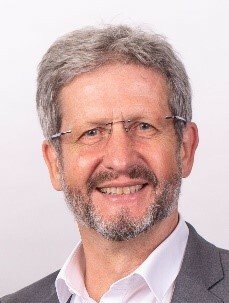VMAP - A Vendor-neutral Standard for CAx Data Storage
Tuesday, 17 December 2024 | Online
Access the Recording
VMAP Standard
The lack of software standards in virtual engineering workflows and incompatible interfaces for the transfer of virtual data not only cause additional costs and complex manual adaptation but also lead to inflexible IT solutions, loss of information, and significant delays in the overall design process. The standardization of data interfaces in CAx is therefore vital for all industry segments where simulation processes are central to the product and process design.
The VMAP standard, led by the VMAP Standards Community, is an initiative to standardize data exchange in computer-aided development processes, where engineers are confronted with a continuously growing number of software tools as well as experimental testing data along their development process from product design, optimization, and validation.
VMAP is a vendor-neutral standard for CAx data storage to enhance interoperability in virtual as well as physical engineering workflows. The VMAP standard can be used to transfer data between simulation codes as well as to store data from physical experiments or machine monitoring, hence has filled the gap by creating the world’s first CAx workflow interface standard. Input/output (I/O) routines have also been provided for easy implementation.
The VMAP specification is based on HDF5 API which is a widely accepted implementation platform for many IO related applications. The VMAP IO library includes bindings for most programming and script languages. It consists of definitions for meta-information, unit & coordinate systems, mesh geometry and discretization, many elements and integration rule definitions, physical result quantities, and common concepts to transfer virtual material model parameters.
VMAP IO Lib v1.2.0
This includes the implementation of the VMAP Standard for simulation and measurement data with clear details about the types of elements, integration types, and various system-related information. The basic structure covers the storage of geometrical data into groups, elements, and points. Furthermore, it encompasses variable data, which involves storage of input and output variables and system groups, which covers unit system, units, metadata etc. The storage of material data in the most basic format is covered by VMAP as well.
The measurement data group involves the same groups as the simulation data group, other than the material groups. Instead, the device group stores information about the measured objects and the measuring setup.
This provides only a brief overview of the very advanced VMAP Structure which stores almost all of the required information for simulation and measurement data.
Agenda
- Motivation
- Introduction to VMAP Standard
- VMAP Standard Detail & VMAP IO - Lib
- Implementation examples using Python
- VMAP Ontologies




